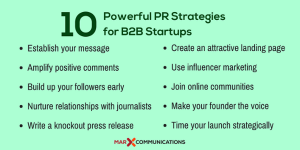Successful leadership can mean the difference between success and failure for any organization, whether it’s a start-up or an established multinational corporation. Rather than blindly clinging to the outdated myth of the “born leader,” most of today’s organizations put a great deal of time, effort, and money into designing leadership competency models that can inform their talent assessment framework and development processes.
What Are Leadership Competencies?
Leadership competencies are the characteristics, skills, and behaviors that enable successful leaders to drive performance and results. The ability to identify and develop these competencies is critical for an organization to grow and thrive in the long run. If a company doesn’t know what to look for it its next generation of leaders, it won’t know how to assess employees or develop its high-potential leaders.
Designing Leadership Competencies That Work
Avoid One-Size Fits All
It’s easy for an organization to fall into the trap of assuming that all leadership positions require the same set of skills. Leadership traits that might be vital to success in one department or role might be much less important in another, even within the same company. For this reason, trying to develop a generalized leadership competency model may result in frustration and ineffective assessment outcomes because it will not emphasize the mission-critical competencies that are vital to success in a specific role. This is also critical for building a leadership succession strategy that helps high-potential employees to develop the competencies they need to take on additional responsibility.
Ensure Competencies Reflect Future Strategy
A growing organization needs to keep its focus on its strategic direction. The leadership skills that were vital to establishing a business are not necessarily the same ones needed to take it to the next level. For example, the leadership characteristics required to drive efficiency may be different than those focused on growth and innovation. By identifying its strategy, organizations can design competency models that will help identify leaders with the potential to help realize those objectives.
Get Input
Gathering feedback from leaders within an organization can provide an “on the ground” view of the challenges they face on a daily basis. This input can also be extremely helpful to identify the most important characteristics for a particular role. Consulting with current leaders may also reveal critical gaps or inconsistencies of what they think is most important for success, which could prompt a productive discussion about what the organization is trying to accomplish.
Ensure the Competencies Are Valid Concurrent Validation
For organizations trying to develop competency models that reflect their existing leadership roles, it’s important to ensure there is actually a correlation between the model and successful incumbent leaders. If those leaders lack these competencies or score poorly on assessment frameworks based on them, then the competency model may not accurately reflect the skills that drive performance. Of course, for leadership teams that have struggled to produce results, this could be an indication of where improvements can be made in terms of training and development.
Use Competencies to Help Assess Leadership Potential
At its core, a competency model is an assessment tool. To be effective, organizations can leverage data to determine whether or not a candidate will perform successfully in a future leadership role. This isn’t always an easy process because a candidate’s current performance expectations may not necessarily equate to success in a different role. A software developer who consistently earns high-performance marks as a coder, for instance, may lack the soft skills needed to lead a team successfully. However, organizations can leverage assessments such as 360 feedback, simulations, and leadership questionnaires to help determine if the candidate has the potential to excel in the future.
Not every organization’s competencies will look the same, even for companies within the same industry. By determining what skills specific leaders need to excel, organizations can begin filling their leadership succession pipelines with high-potential candidates who will be able to step into new roles more easily. Competency models can also help them put improved development programs in place to address skills shortcomings for existing leaders and provide their next generation of leaders with the support they need to be successful.
Business & Finance Articles on Business 2 Community
(82)






